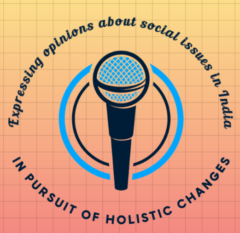
Rediscover the Joy of Reading on National Book Lovers Day
Every August 9, India joins a global community celebrating readers’ passion. National Book Lovers Day 2025 invites everyone to embrace the timeless joy of books. Across cities and villages, stories connect people of varied ages and languages. This day encourages rediscovering the magic held within pages and digital screens alike. Reading today is more than a hobby—it is an act of cultural celebration. It brings nostalgia and renewal in equal measure.
While the day has no official theme in India, the spirit of unity is clear. Readers share their favorite books online and offline, building a community across boundaries. Bookstores, libraries, and digital platforms organize special events and promotions on this occasion. Schools and NGOs host storytelling sessions to inspire young readers nationwide. India’s deep love for diverse literature shines brightly every August. National Book Lovers Day 2025 is a call to celebrate that vibrant literary spirit.
The Evolution of Reading in India: From Ancient Scripts to Digital Books
India’s literary heritage began with sacred palm-leaf manuscripts accessible to very few. In our country, reading was limited by geography, language, and social barriers for centuries. However, the arrival of the printing press in 1556 in Goa democratized written knowledge. Over time, newspapers and vernacular literature flourished across the subcontinent’s vast regions. This massive cultural shift brought literacy and ideas to millions more readers. Looking back, the printing press laid the foundation for India’s modern reading culture.
Today, India’s reading landscape blends ancient traditions and digital innovation smoothly. E-books, AI-narrated audiobooks, and blockchain-authenticated editions preserve old and new stories. As a matter of fact, readers can access thousands of titles anytime, anywhere, through smartphones and tablets. Apparently, their choices range from epics and folklore to the latest contemporary fiction. This mix honors India’s past while embracing future reading trends boldly. In fact, reading now transcends physical formats, empowering a nation of readers fully.
How the Printing Press Transformed India’s Reading Culture
The printing press revolutionized the flow of knowledge across India’s diverse societies. Historically, Jesuit missionaries introduced the first press in Goa, printing religious and educational texts. Besides, local languages soon gained publication hubs in Bengal, Maharashtra, and Tamil Nadu. Indeed, these presses broke monopolies, fueled reform movements, and nurtured public libraries widely. In course of time, books became tools of empowerment available to growing literate public groups. Undoubtedly, the printing press became a catalyst for social change and political awareness.
By the nineteenth century, printed vernacular newspapers supported nationalist aspirations and social reforms. Evidently, reading rooms became meeting places for intellectual exchange and public debates. Clearly, this infrastructure helped build mass consciousness essential to India’s independence movement. As a technology, the printing press laid the groundwork for India’s thriving literary ecosystem. Moreover, its legacy continues today in digital publishing and reading initiatives nationwide.
Growth of Book Publishing and Literacy in India
| Year | Titles Published | Languages Available | Literacy Rate (%) |
|---|---|---|---|
| 1950 | 17,000 | 12 | 18 |
| 2000 | 70,000 | 22+ | 65 |
| 2025 (est.) | 115,000+ | 30+ | 78 |
Source: National Book Trust, India (2024), UNESCO
The Celebration of Reading Diversity on National Book Lovers Day
National Book Lovers Day captures India’s diverse and multilingual literary world vividly. For instance, readers can engage with works in Hindi, Marathi, Bengali, Tamil, Malayalam and dozens of other tongues. Furthermore, book clubs, social media campaigns, and library events celebrate every language and genre. In addition, schools organize multilingual storytelling and reading challenges for students in both urban and rural settings. Also, sharing books and stories strengthens cultural bonds across communities daily. In short, literature’s power to connect India’s varied identities shines on this special day.
Many festivals and local initiatives promote translation and accessibility as core goals. As commonly seen, interactive readings, digital storytelling, and cross-language exchanges have become popular nationwide. Likewise, people discover narratives beyond their first language, enriching understanding and empathy. Obviously, digital platforms widen reach while preserving regional literary heritage actively. This celebration’s inclusivity mirrors India’s foundational ‘unity in diversity’ principle clearly.
The Role of Books in Shaping Modern India’s Identity
Books have been a backbone of India’s social and political movements throughout history. For example, freedom fighters like Bal Gangadhar Tilak used printed words as powerful weapons. Moreover, Dr. B.R. Ambedkar’s writings shaped India’s Constitution and social justice reforms deeply. After independence, textbooks and literacy programs united millions under a common cultural narrative. Importantly, books continue to inspire innovation, critical thinking, and empathy among the youth today. As APJ Abdul Kalam rightly said, “Learning gives creativity… knowledge makes you great.”
In contemporary India, literature helps bridge divides, fostering dialogue across socio-economic backgrounds. In this context, historical texts and new voices coexist to create a shared Indian identity through stories. Hence, National Book Lovers Day reminds us of the enduring role of books in education and nation-building. Unquestionably, every reader contributes to this evolving narrative of unity and progress. Further, reading remains a vital thread in India’s constantly evolving, diverse social fabric.
Multilingualism in India’s Book Publishing and Reading
India’s linguistic diversity makes multilingual publishing essential and uniquely vibrant. Officially, over 22 languages plus many regional dialects shape India’s literary market. Notably, local language books preserve culture, history, and folk traditions vividly. As seen, translation projects and bilingual publications expand accessibility across language divides daily. Increasingly, young readers embrace both regional and global languages in their reading choices. Amish Tripathi said, “Language is not a barrier; it is a doorway.”
Government and private initiatives support translations, digital archives, and mobile libraries nationwide. Besides, the National Digital Library hosts books covering a vast array of languages and scripts. Definitely, this ecosystem strengthens inclusivity and ensures endangered languages find preservation through literature. Multilingualism nurtures cross-cultural understanding essential for democratic participation in India. Factually, the literary fabric thrives precisely because it welcomes and preserves many tongues fluently.
The Digital Reading Revolution in India in 2025
Digital reading in India has transformed access, especially in remote and underserved areas. As a result, cheap smartphones and affordable data bring entire libraries into every home. Moreover, platforms like the National Digital Library and Amazon’s “Make India Read More” expand reach massively. Of late, E-books and AI-narrated audiobooks attract millions, offering convenient choices for diverse readers. In this context, I offer my readers a peek into my E-book, A Beginner’s Guide to Understanding AI and Its Real-World Impact in 2025.
Additionally, self-publishing and blockchain editions empower new authors, reshaping traditional publishing industries rapidly. Clearly, National Book Lovers Day online buzz reflects this digital literary awakening nationwide.
Digital tools enable hybrid reading habits combining physical books and multimedia formats. In particular, audiobooks help overcome literacy barriers while engaging busy modern lives. Added to this, kiosks in libraries and schools provide combined access to print and digital formats. Apparently, this synergy supports a wider, more inclusive culture of reading than ever before. In this regard, the digital revolution has turned National Book Lovers Day into a virtual as well as physical celebration.
Digital Reading Growth in India (2020-2025)
| Year | E-Book Users (millions) | Print Sales (₹ billions) | Audiobook Users (millions) |
|---|---|---|---|
| 2020 | 56 | 44 | 13 |
| 2025* | 158 | 41 | 51 |
Source: Publishers & Booksellers Association of India, 2024
Challenges to India’s Reading Culture Today
Though convenient, digital habits also threaten deep reading through screen addiction. Evidently, many young people spend excessive time on social media and gaming instead. Consequentially, public and community library usage has dropped sharply in some states. In addition, many libraries face funding and modernization challenges to remain relevant. At the same time, initiatives seek to revitalize libraries with e-books, reading events, and youth engagement. Without ongoing effort, reading culture risks fragmentation amid fast entertainment cycles.
Significantly, prominent voices like Shashi Tharoor emphasize the library’s role as a community beacon. Even to this day, libraries remain critical for inclusive access to knowledge and civic engagement. Importantly, NGO projects and mobile libraries combat decline by innovating outreach methods. Besides, schools incorporate reading hours and literary competitions to reinforce book engagement. Even in the digital age, physical books and libraries must coexist with technology. Obviously, this balance is essential for sustaining India’s rich reading tradition.
Public Libraries and Literacy Initiatives: Empowering Rural Readers
Public libraries in rural India are vital gateways to education and opportunity. In fact, many rural readers first connect with books through local library programs or mobile vans. Notably, government schemes upgrade facilities and fund distribution of localized reading material. For instance, NGOs like Pratham deploy rural book fairs and community reading drives effectively. Moreover, storytelling festivals and bilingual literacy campaigns expand reach to marginalized groups. Clearly, such initiatives boost India’s literacy rate, currently nearing 78% nationally.
However, rural libraries face infrastructure gaps, gender imbalance, and economic challenges. In fact, many still lack modern technology or trained staff needed for expanded programs. Due to this, ongoing investment and policy support remain essential to sustain rural reading progress. Indeed, integrating digital resources with traditional methods maximizes impact on literacy outcomes. Each year, literacy initiatives bring more readers into the literary fold permanently. In my opinion, National Book Lovers Day highlights this crucial work nationwide.
National Book Lovers Day: Reflecting India’s Rich Cultural Tapestry
National Book Lovers Day symbolizes India’s strength in diversity through shared literary passion. Besides, it celebrates stories in every language, genre, and form reflecting Indian life vividly. To add sheen, events combine classical poetry, contemporary fiction, folk narratives, and digital storytelling seamlessly. Additionally, social media amplifies reader voices from remote villages to metropolitan centers alike. Without doubt, these celebrations foster empathy, breaking barriers across communities and cultures effectively. Books truly unite India, helping readers dream beyond boundaries and differences.
Olympic gold medallist Neeraj Chopra said, “Books don’t just teach us, they unite us.” To put things in perspective, this day embodies India’s ongoing quest for social harmony and cultural pride. Interestingly, literary festivals, reading marathons, and translation drives build inclusive communities year-round. Apart from this, the power of stories supports India’s democracy and pluralism every day. Hence, National Book Lovers Day is a reminder that literature remains a vital cultural glue.
Building a Literate, Inclusive, and Sustainable India through Reading
Reading is fundamental to cultural growth, education, and national progress in India. In my view, literacy supports environmental conservation by inspiring awareness and community action. Imperatively, government incentives should expand publishing in local languages and rural libraries. In addition, linking reading campaigns to sustainability goals will amplify social benefits. Undoubtedly, a literate and engaged India will drive innovation and inclusive development going forward. However, these changes require collaboration among policymakers, educators, and citizens alike.
On National Book Lovers Day 2025, let’s recommit to nurture the reader within us. In this regard, preserving linguistic diversity, embracing digital advances, and fostering easy access matters a lot. To conclude, each book read is a step toward a stronger, greener, and more cohesive society. Cohesively, let’s celebrate reading as the foundation for India’s future growth and unity. Will you join this vibrant literary movement today?
This National Book Lovers Day, pick up a book, share your favorite story, and inspire others. Celebrate National Book Lovers Day 2025 by making reading a lifelong habit for yourself and your community.
#NationalBookLoversDay #BookLovers #IndianBooks #DigitalReadingInIndia #MultilingualPublishing

Good write up!
Since days of Johann Gutenberg reading habit has been flourishing.
The two major areas for acquiring Knowledge are 1. Reading and 2. Travelling
People who have the habit of reading have a larger and positive world view.
So let us encourage reading in our children.